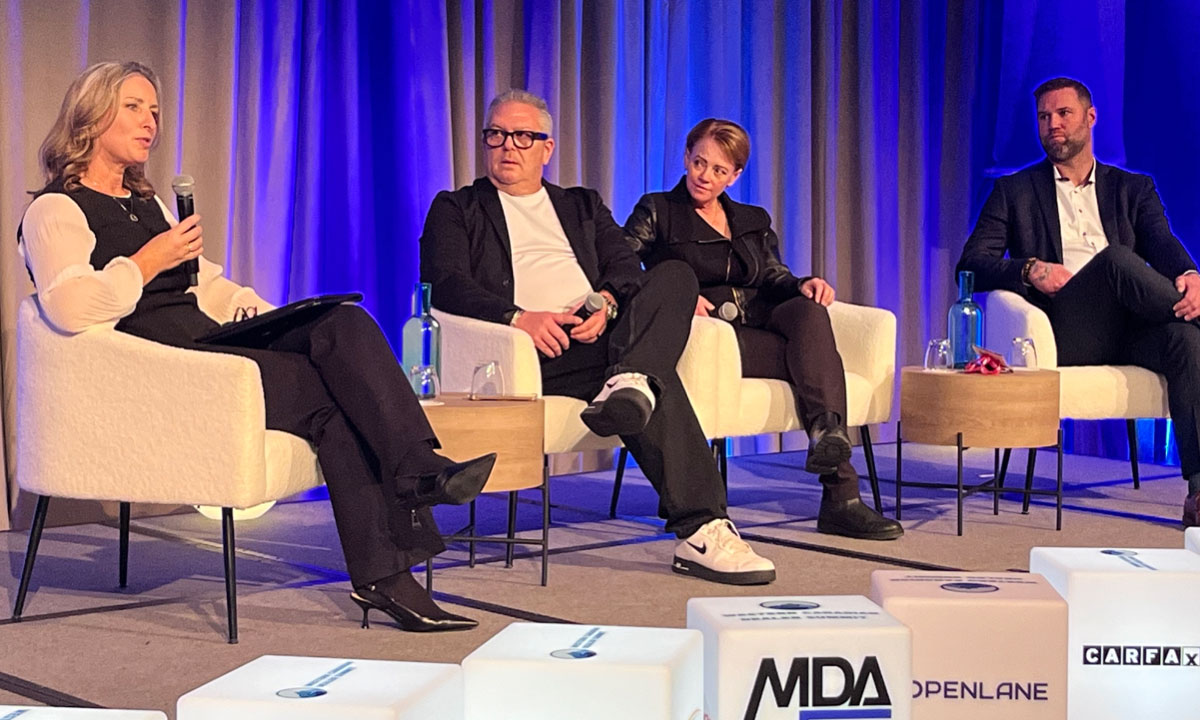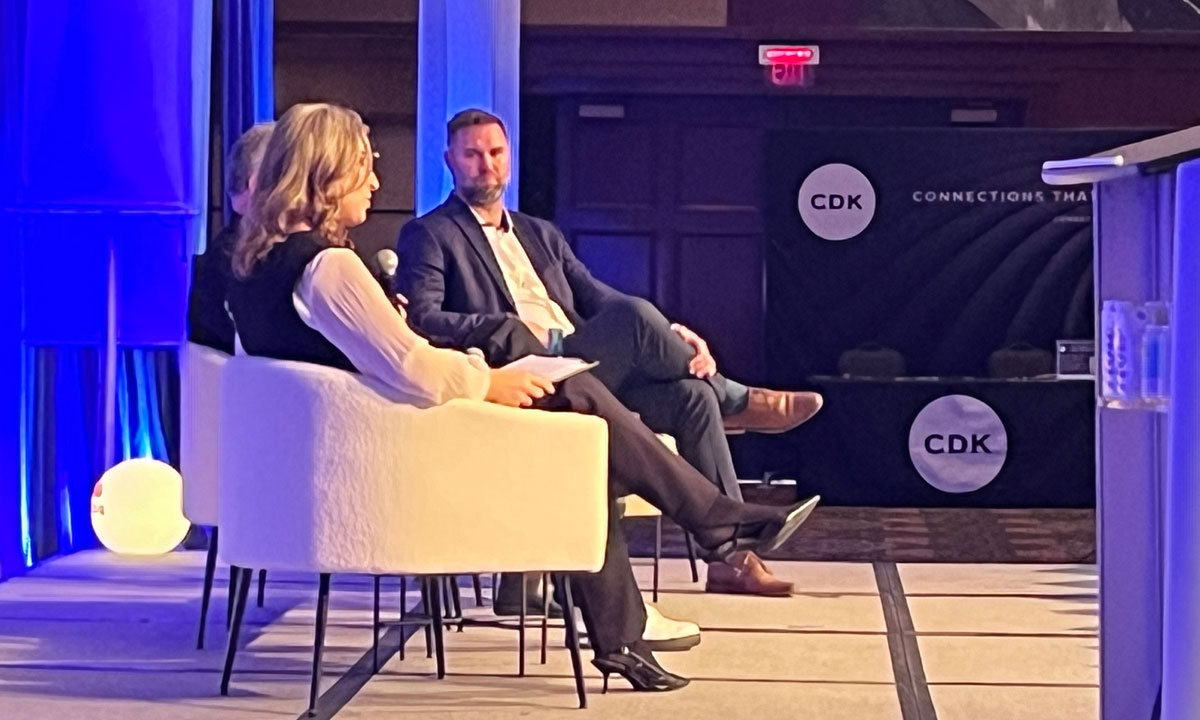The conversation around fixed operations at the Western Canadian Dealer Summit (WCDS) in Lake Louise took on a sharper tone this year.
Rather than focusing primarily on efficiency tools or process improvements, Friday’s panel of fixed operations leaders warned that the industry is heading into a technician shortage that could grow severe enough to limit dealership throughput and profitability.
The session, moderated by Sebrina Westbrooke, Program Manager for the Canadian Dealer Academy at the Automotive Business School of Canada, underscored how thin the talent pipeline has become and how much needs to change to rebuild it.
Westbrooke opened the discussion by reinforcing the long-standing reality that fixed operations carry dealerships during volatile sales cycles. She noted that while digital retailing and EV adoption often capture headlines, it is the availability of skilled people in the shop that will determine whether stores can sustain customer relationships and long-term revenue.
The panel featured three voices deeply connected to the daily pressures of fixed operations: Damon Egan, Service Manager at Sherwood Ford; Alana Solis, founder and CEO of Gold Service Training; and Grant McNeill, Fixed Operations Manager at Waterloo Ford. All three agreed the industry has reached a pivotal moment.
Egan described the technician shortage as “a real thing and a bigger problem than many anticipate.” He referenced comments from Ford CEO Jim Farley, noting that thousands of bays in the United States remain idle because there are no technicians to fill them. That problem, Egan warned, is creeping steadily north.
For Egan, the path forward starts with a more aggressive approach to attracting young people into the trade. He argued that dealers must rebuild the narrative around the profession. Today’s technicians are far closer to computer specialists than traditional mechanics, he said, yet many students still believe the job requires physical strength more than analytical skill. “That perception is costing us talent,” he said.
To counter it, his store works directly with local schools and invites students to shadow experienced technicians. These early experiences help them understand the complexity of the work and the career trajectory available to them.
The panel noted that training gaps are widening as vehicle technology evolves. EVs, ADAS systems, integrated sensors, and complex digital diagnostics now dominate repair volumes in many markets. Egan said technicians today need strong computer skills, software literacy, and confidence interpreting real-time data.
Solis added that this shift requires dealers to take a much more deliberate approach to professional development. “Technicians need continuous training if we expect them to handle the complexity of modern vehicles,” she said. “They can no longer learn everything on the job.”
She also stressed that the industry often underestimates the cognitive demands placed on today’s technicians. The work is mentally intensive and can be isolating when shops do not provide adequate support.
In her view, this should prompt a reconsideration of compensation structures, especially flat rate. Many diagnostic tasks cannot be easily standardized or completed at high speed, and pay models designed for mechanical labour do not reflect the realities of computer-based problem-solving.
The coming wave of EV work
While EV penetration varies widely across Canada, all panelists agreed that dealers must prepare now for the service and diagnostic work that will follow. Egan described the difference between Western and Eastern Canadian markets as “eye-opening” after recently traveling to Montreal. EV volume in some regions has already shifted service requirements, and the learning curve is only beginning.
McNeill added that connected vehicles with deep data histories could significantly improve diagnostic accuracy. Access to stored fault data, vehicle use patterns, and predictive maintenance alerts will change how technicians begin their work. He also pointed out that connected data will support appraisals and used-car operations by giving dealers greater transparency into a vehicle’s past.
Solis noted that these tools also help reassure customers. When an advisor can view fault codes remotely and explain whether an issue is urgent, it builds trust and reduces anxiety.
A recurring theme in the panel was the importance of retaining the technicians already in the shop. Solis described dealerships where technicians stay because they feel valued, supported, and respected. These environments, she said, treat technicians as skilled professionals rather than replaceable labour.
Westbrooke emphasized that younger employees have different expectations around balance and flexibility. They may be open to alternative schedules, but they also want predictability and an employer that understands their personal responsibilities.
Egan said his store has adapted quickly. Some technicians now work later shifts to accommodate childcare or to take advantage of quieter evening hours. He noted that flexibility does not weaken productivity. Instead, it builds loyalty and often leads to higher-quality work.
McNeill focused on leadership as the core retention tool. “People don’t leave companies. They leave leadership,” he said. He encouraged managers to invest time in understanding what motivates each technician, to offer clear expectations, and to involve them in decisions that affect workflow and shop operations. Engagement, he said, is what sustains high-performing teams.
The panel also challenged the idea that dealers should rely only on local recruitment. Wage differences between provinces may encourage technicians to relocate, and some markets have far deeper talent pools than others. Egan suggested dealers consider relocation support and bonuses, and said the industry should be prepared to recruit nationally rather than simply trying to outbid nearby competitors within Alberta.
McNeill added that transparency during the hiring process reduces turnover. Candidates should understand the expectations of the role, the pace of the shop, and the compensation structure before they join. Clear communication helps align talent with the right store and reduces the common pattern of early departures.
The panel closed on a straightforward message. Building the next generation of technicians will require a redesigned training pipeline, stronger school partnerships, modern pay structures, and a more progressive approach to workplace culture. The industry can either shape that future now or face deeper shortages in the years ahead.
















